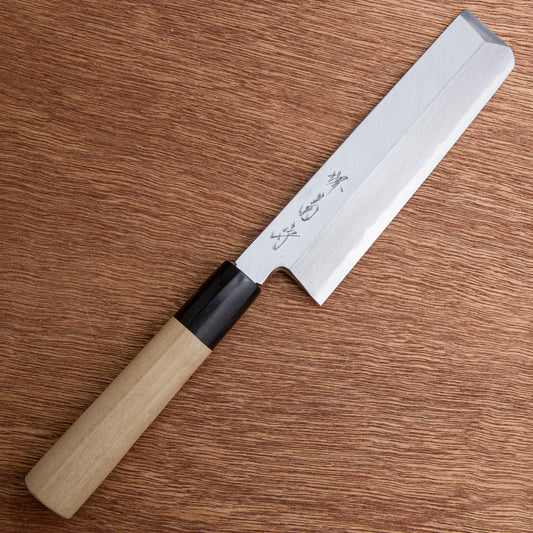
Why Maintenance Matters
Taking care of your bull cutter knife doesn’t just make it last longer—it also keeps you safe. A dull or damaged knife can slip and cause injury. Regular maintenance also means smoother cuts, less effort, and better results.
Understanding Your Bull Cutter Knife
Before diving into maintenance, it helps to know what your knife is made of. Most bull cutter knives have:
A strong, often stainless or carbon steel blade
A sturdy handle made of wood, plastic, or rubber
A locking or folding mechanism (for some models)
Each part needs attention. When you understand your knife's design, it's easier to take care of it the right way.
Daily Care Tips
Clean After Every Use
Always wipe your knife clean after using it. Dirt, moisture, and other residues can cause rust or dullness.
Use warm water and mild soap
Avoid soaking the knife in water
Dry it completely with a towel
Tip: Never put your bull cutter knife in the dishwasher. The heat and detergent can damage both the blade and handle.
Use It for the Right Job
Bull cutter knives are strong, but they’re not meant for everything. Don’t use them to pry open cans or cut metal. Misusing the knife can bend the blade or break the handle.
Weekly Maintenance
Sharpen the Blade
A sharp blade is safer and more effective. Use a sharpening stone, honing rod, or professional sharpener.
Steps to sharpen:
Hold the knife at a 20-degree angle to the sharpener
Move the blade across the sharpener evenly
Repeat on both sides
Wipe the blade clean afterward
Pro Tip: If you're not confident, take it to a professional for sharpening.
Check for Loose Screws
If your bull cutter knife has screws (like in folding models), check them weekly. Tighten any that feel loose to keep the knife secure.
Monthly Deep Clean and Oil
Deep Clean the Blade and Handle
Sometimes, dirt hides in cracks or under the handle. Use a soft brush to clean hard-to-reach spots. If the handle is removable, take it apart to clean it thoroughly.
Oil the Blade
Oiling helps prevent rust and keeps the blade smooth. Use food-safe mineral oil or knife-specific oil.
How to oil:
Put a few drops of oil on a cloth
Wipe the entire blade and any moving parts
Let it sit for a few minutes, then wipe off any extra
Note: Don’t use cooking oils—they can get sticky over time.
Seasonal or Occasional Care
Store It Properly
When not in use, keep your knife in a dry place. Use a knife sheath or blade guard to protect the edge.
Avoid:
Leaving it in damp toolboxes
Storing it loosely with other tools
Inspect for Damage
Every few months, inspect the knife for cracks in the handle, bent blades, or rust spots. Early fixes are cheaper and easier than replacements.
Common Mistakes to Avoid
Don’t Use a Dull Blade
Using a dull knife is not only hard—it’s dangerous. You have to apply more pressure, which increases the risk of slipping.
Don’t Over-Oil
Too much oil can attract dirt. Use just enough to coat the blade lightly.
Don’t Forget the Handle
If the handle gets loose or cracked, fix it right away. A damaged handle can make your knife unsafe to use.
Tips from the Experts
Rotate Your Knives
If you use a bull cutter knife regularly, consider having a second one. Rotate between them to reduce wear and tear.
Keep a Maintenance Kit
A small kit with sharpening tools, oil, and a cleaning cloth can save you time. Keep it near your workspace for quick access.
Learn from Use
Each knife wears down differently depending on how you use it. Pay attention to which parts dull fastest and adjust your maintenance accordingly.
Safety First
Even the best-maintained knife is dangerous if not used carefully.
Always Cut Away from Yourself
This basic rule can prevent a lot of injuries.
Keep It Out of Reach of Children
If your knife isn’t locked or covered, don’t leave it lying around.
Wear Gloves if Needed
For heavy-duty tasks, a pair of cut-resistant gloves can offer extra safety.
Conclusion
Taking care of your bull cutter knife doesn’t have to be complicated. With regular cleaning, sharpening, and proper storage, your knife can stay in great condition for years. Think of it like any other investment—the more you put into maintenance, the longer it will last and the better it will perform. Use these expert tips to get the most out of your tool, keep yourself safe, and make every cut count.
FAQs About Bull Cutter Knife Maintenance
Q1. How often should I sharpen my bull cutter knife?
It depends on how often you use it. For regular use, sharpening once every two weeks is a good rule. If the knife feels dull, it's time to sharpen it.
Q2. Can I use cooking oil to protect the blade?
It's better to use mineral oil or knife-specific oil. Cooking oil can become sticky and attract dirt over time.
Q3. What should I do if my knife gets rusty?
Use a rust remover or gently scrub with steel wool and oil. Be careful not to scratch the blade too much. After removing rust, always re-oil the blade.
Q4. Can I put my bull cutter knife in the dishwasher?
No. Dishwashers can damage the blade, handle, and locking mechanism. Always hand-wash and dry it immediately.
Q5. Is it okay to use one knife for all jobs?
Even though bull cutter knives are strong, it’s best to use the right knife for each task. Using the wrong knife can damage it and make the job harder.